Most Popular
Korean History
-
1
2014 ferry disaster left scars that never healed
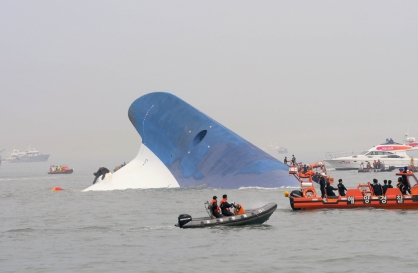
-
2
In 2012, K-pop makes leap from 'Gangnam' to the world
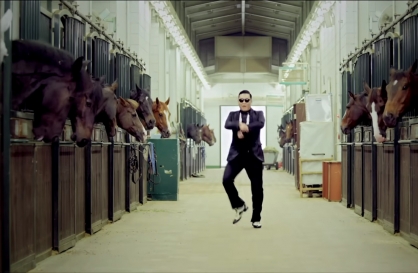
-
3
Deadly sinking of Navy ship in 2010 marks worst postwar military disaster
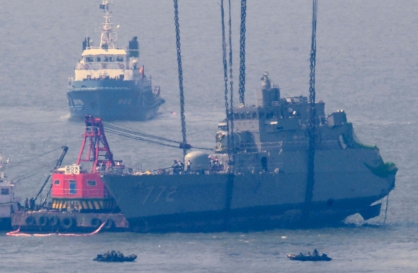
-
4
In 2008, Korea's National Treasure No. 1 went down in flames
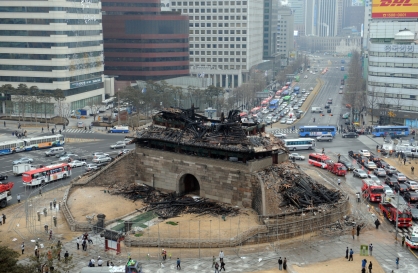
-
5
In 2005, science world’s biggest scandal unravels in Seoul
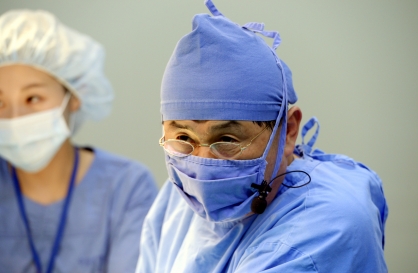
[Korean History] Divided Koreas hold first-ever summit talks in 2000
Kim's engagement of N. Korea was later tarnished by scandal, but led to years of inter-Korean exchanges for first time since Korean War
By Kim So-hyunPublished : Sept. 27, 2023 - 16:02

On the morning of June 13, 2000, then-President Kim Dae-jung flew to Pyongyang on a route that had not been used for 55 years.
His arrival at Sunan Airport in Pyongyang for the first-ever inter-Korean summit since the 1950-53 Korean War was televised worldwide.
"Whether (North Korean leader) Kim Jong-il would show up or not at the airport was the talk of the town,” recalled Choi Sung-jin, a former reporter and editor of The Korea Herald.
When he did appear, the subsequent scene of the two leaders holding hands and smiling moved the hearts of many people watching in the South, even bringing some to tears, Choi said.
The dramatic moment marked the start of a historic three-day summit in the North Korean capital.
"At the time, I felt like the reunification of the two Koreas was going to happen soon," said Yu Kun-ha, a former managing editor of The Herald.
The front page of the next day's issue of The Korea Herald features a close-up photo of the two Kims' first encounter at the airport, with the boldest headline saying, "A day to be 'recorded in history.'"

Historic meeting
On June 15, the last day of Kim Dae-jung’s three-day visit, the two sides issued the June 15 Joint Declaration, in which the South and the North “agreed to resolve the question of reunification independently (of foreign influences) and through the joint efforts of the Korean people, who are the masters of the country.”
The five-point declaration served as the basis of inter-Korean ties and the South’s policy toward the North, at least until 2007 under then-President Roh Moo-hyun.
The declaration in 2000 said, “Acknowledging that there are common elements in the South’s proposal for a confederation and the North’s proposal for a federation of lower stage as the formulae for achieving reunification, the South and the North agreed to promote reunification in that direction.”
The two sides also agreed to promptly resolve humanitarian issues such as the exchange of visits by separated family members on Aug. 15 National Liberation Day and the question of former long-term prisoners in the South who had refused to renounce Communism.
They agreed to “consolidate mutual trust by promoting balanced development of the national economy through economic cooperation and by stimulating cooperation and exchanges in civic, cultural, sports, public health, environmental and all other fields,” and to hold dialogue between relevant authorities in the near future to implement such agreements expeditiously.
President Kim Dae-jung invited his North Korean counterpart, whose official title was National Defense Commission chairman, to visit Seoul, and the North’s Kim agreed to visit Seoul at an appropriate time.

Sunshine Policy
Ever since his inauguration in February 1998, President Kim Dae-jung had vowed to improve relations between the two Koreas through reconciliation and cooperation through what was called the “Sunshine Policy” of engagement toward North Korea.
The term originated from one of Aesop’s fables, “The North Wind and the Sun,” which teaches the value of persuasion over force, as the policy sought to loosen containment of North Korea and eventually get the country to denuclearize itself.
The policy and Kim Dae-jung's historic visit to Pyongyang received much international attention and eventually led to him winning that year’s Nobel Peace Prize.
South Korean presidents have occasionally talked about their intention to meet with their North Korean counterpart since the 1980s.
Former President Chun Doo-hwan first officially proposed during a New Year’s national address in 1981 that if the North’s then-leader, Kim Il-sung, were to visit Seoul, he would be willing to visit Pyongyang.
Despite intermittent rounds of behind-the-scenes talks, the summit never happened during the terms of Chun or his successors Roh Tae-woo and Kim Young-sam through the 1980s and 1990s.
Soon after Kim Dae-jung took office, restrictions on the size of investments in North Korea for inter-Korean projects were scrapped, and Hyundai Group founder Chung Ju-yung herded 1,001 cows overland to North Korea, and met with Kim Jong-il.
Chung had earlier visited the North in 1989 as the first South Korean civilian to do so since the Korean War. At the time, he had signed an agreement with North Korean authorities on inter-Korean economic cooperation, including the development of Mount Geumgang in the North as a tourist zone, but the deal did not take effect until years later due to the North’s nuclear weapons program. Nearly 10 years later in 1998, the cattle crossing through Panmunjom in trucks led by the legendary entrepreneur symbolized the beginning of the Sunshine Policy.
In March 2000, Kim Dae-jung made a speech during his state visit to Berlin, in which he urged the North to start dialogue with the South to resolve the issue of separated families and to exchange special envoys, and offered to help the North overcome economic hardships.
After the speech, known as the “Berlin Declaration,” the North expressed its willingness to host summit talks. Following months of closed-door negotiations in Shanghai, Beijing and Singapore, and preparatory meetings at Panmunjom, the meeting took place.
Tension persisted until the last minute, however, for the South Korean delegation, according to the South's then-Culture Minister and special envoy for the inter-Korean summit Park Jie-won.
“We were supposed to announce a statement upon arrival in Pyongyang. But the North told us not to do that. I was stunned by such a rude request and said that we must contact North Korea and issue the statement as planned,” Park said in an interview with broadcaster KBS years after the 2000 summit.
“But (officials coordinating the summit) said that Kim Jong-il might come to the airport himself to greet our president and that’s probably why the North told us not to announce the statement. This was all happening while we were aboard the plane. I was extremely nervous.”
Even after the plane arrived in Pyongyang, and North Korean Foreign Ministry officials entered the plane through a back door, they said they didn’t know whether Kim Jong-il would be coming to the airport, according to Park.
“The South Korean entourage got off the plane and lined up. Suddenly, there was cheering from the welcoming crowd. I saw Kim Jong-il standing over there … When the two leaders finally shook hands with each other, I was moved to tears,” Park said.
Aftermath
The 2000 summit led to reunions of separated families and other nongovernmental cooperation between the Koreas, which meant cross-border travel of people for humanitarian and cultural projects.
That didn’t mean it was always smooth sailing between the two governments. The first official talks after the summit broke down, and many of the agreements made in the following ministerial talks were not properly implemented.
The US' hard-line policy on North Korea, led by then-President George W. Bush, who was sworn in in January 2001, also affected inter-Korean relations.
Bilateral ties froze at times after incidents like the Second Battle of Yeonpyeong in June 2002, or an exchange of fire between South and North Korean patrol boats along a disputed maritime boundary near Yeonpyeong Island in the Yellow Sea; and thawed with events like the start of construction for the joint industrial park in the North’s Gaeseong in June 2004.
Regardless of what happened between the Koreas, however, North Korea apparently went on with its nuclear weapons and missile development, conducting a nuclear test in October 2006.
Kim's engagement with the North was later criticized over allegations that his government bribed the regime in Pyongyang for a summit. In 2003, Hyundai Group's then-Chairman Chung Mong-hun, a son of Chung Ju-young, committed suicide amid an investigation into the North Korea payoff scandal.
From 2008, nongovernmental exchanges between the Koreas, which had begun with Kim’s Sunshine Policy for the first time in half a century, came to a halt with the change of government in the South amid the North’s continued nuclear and missile tests. The industrial park in Gaeseong, which had been the last remaining inter-Korean project, was shut down in 2016.
Except for a brief period of reconciliatory mood in 2018 under the Moon Jae-in administration, during which North Korean leader Kim Jong-un met with then-US President Donald Trump, relations between the Koreas have remained strained.





![[Herald Interview] How Gopizza got big in India](http://res.heraldm.com/phpwas/restmb_idxmake.php?idx=644&simg=/content/image/2024/11/20/20241120050057_0.jpg&u=20241120164556)


![[KH Explains] Dissecting Hyundai Motor's lobbying in US](http://res.heraldm.com/phpwas/restmb_idxmake.php?idx=644&simg=/content/image/2024/11/20/20241120050034_0.jpg&u=)
![[Kim Seong-kon] Farewell to the vanishing John Wayne era](http://res.heraldm.com/phpwas/restmb_idxmake.php?idx=644&simg=/content/image/2024/11/19/20241119050096_0.jpg&u=)
![[Graphic News] 70% of S. Koreans believe couples can live together without tying the knot: survey](http://res.heraldm.com/phpwas/restmb_idxmake.php?idx=644&simg=/content/image/2024/11/19/20241119050098_0.gif&u=)












![[Today’s K-pop] Blackpink’s Jennie, Lisa invited to Coachella as solo acts](http://res.heraldm.com/phpwas/restmb_idxmake.php?idx=642&simg=/content/image/2024/11/21/20241121050099_0.jpg&u=20241121172748)